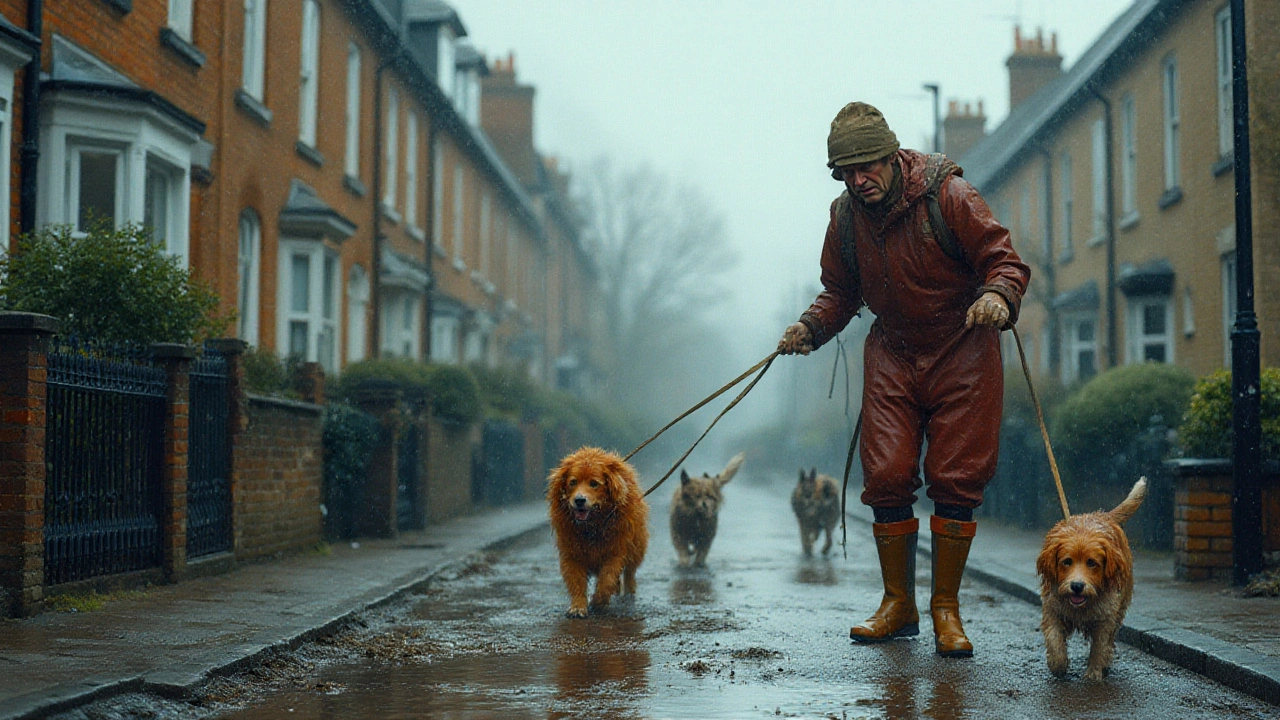Dog Walking Risks: Stay Safe on Every Walk
Taking your dog out for a walk sounds simple, but it hides a lot of hidden dangers. From sudden traffic to hidden parasites, many things can turn a fun stroll into a stressful situation. Knowing the most common risks and how to avoid them lets you enjoy a relaxed walk and keeps your dog healthy.
Common Hazards on the Street
Busy roads are the biggest threat. Even a careful owner can get caught off guard by a fast car or a distracted driver. Use sidewalks whenever possible and keep your dog on a short leash near traffic. If you must cross a road, stop at a crosswalk and make sure the dog stays close to you.
Another street danger is other dogs. Not all owners keep control, and a sudden bolt can lead to a bite. Let your dog sniff the area from a distance before you get too close. If you see an aggressive dog, change direction calmly—don’t chase or pull hard, as that can make your dog panic.
Trash bins and litter are easy to overlook but can cause poisoning or blockages. Dogs love to dig and sniff, so keep an eye on what they pick up. Pick up any food scraps or small objects before they get into your dog’s mouth.
Health Risks While Walking
Ticks and fleas love tall grass and wooded paths. A quick tick check after each walk can prevent Lyme disease and other infections. Carry a small tick removal tool and know how to pull a tick straight out, head included.
Heatstroke is a real danger in summer. Dogs can’t sweat like we do, so they overheat fast, especially on hot pavement. Feel the ground with your hand—if it’s too hot for your bare foot, it’s too hot for paws. Walk early in the morning or late evening, bring water, and let your dog rest in the shade.
Cold weather brings its own worries. Ice can slip your dog’s paws, and salt can irritate their skin. Use booties if you walk on icy sidewalks, and rinse your dog’s paws after each walk to remove salt.
Allergies to pollen or plants can cause sneezing, itching, or watery eyes. If you notice these signs after a walk, try a different route with less greenery or talk to your vet about allergy meds.
Finally, think about the risk of losing your dog. Even a well‑trained dog can be distracted by a squirrel or a scent. A secure collar with ID tags and a microchip give you the best chance of a quick reunion if they slip away.
By watching for traffic, other dogs, waste, parasites, temperature extremes, and proper identification, you cut most walking risks dramatically. The goal isn’t to scare you—just to give you simple, real‑world tricks that fit into any daily routine.
Next time you grab the leash, take a moment to check the route, pack a water bottle, and do a quick visual scan for hazards. A few seconds of planning turns a risky walk into a safe adventure for you and your four‑legged buddy.

Dog Walking Drawbacks: Risks, Realities, and Hidden Downsides
Dog walking isn’t all fresh air and wagging tails. Find out the true downsides, safety risks, and hidden costs, plus tips for making each walk safer and smoother.
View more